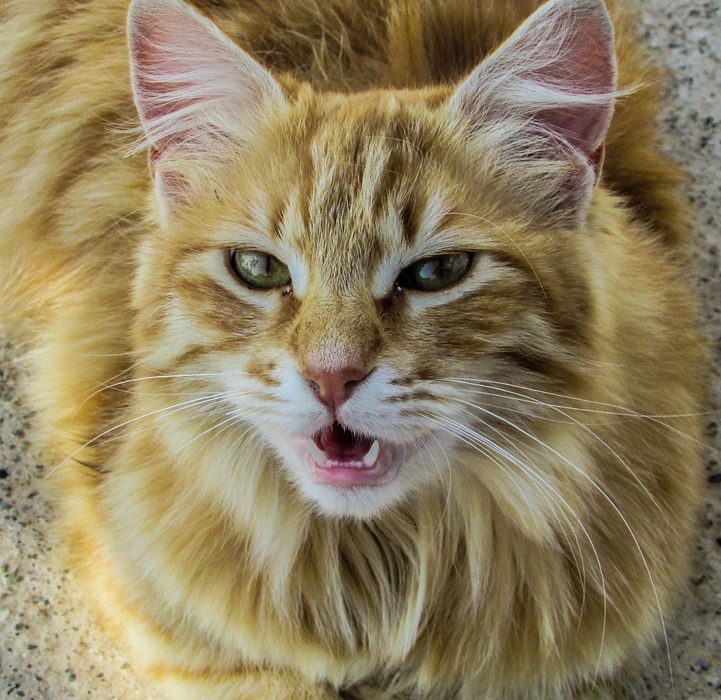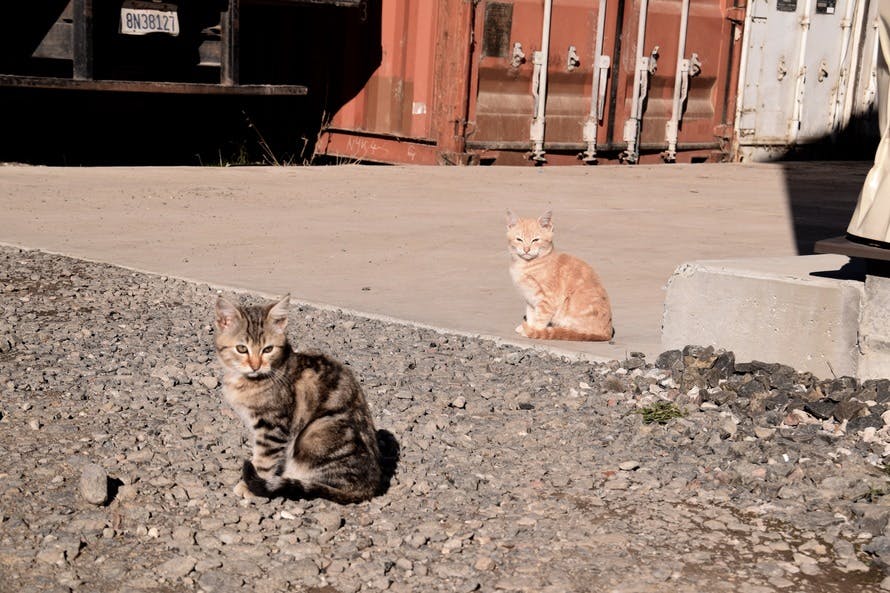This article delves into the complex history and enduring myths surrounding black cats, exploring the fascinating dichotomy between superstition and scientific reality. We’ll journey through centuries of cultural beliefs, unraveling the origins of these misconceptions and examining the true nature of these often-misunderstood felines. We'll also explore the profound impact of these beliefs on the lives of black cats, urging a shift towards understanding and compassion.
Part 1: A History of Superstition and Fear

1.1. Ancient Egypt: A Revered Deity
- In ancient Egypt, black cats were not only accepted but cherished. They were associated with the goddess Bastet, a powerful deity who represented protection, fertility, and motherhood.
- Black cats were believed to bring good luck, ward off evil spirits, and ensure a bountiful harvest. Their presence in homes was seen as a blessing.
- The Egyptians even mummified their beloved black cats, showcasing the profound reverence they held for these creatures.
1.2. The Middle Ages: The Rise of Witchcraft
- During the tumultuous Middle Ages, black cats underwent a dramatic shift in perception, becoming symbols of evil and witchcraft.
- The association with witchcraft was fueled by widespread fear of the unknown and a growing distrust of women. The idea that black cats were witches in disguise gained traction, leading to persecution and killings.
- The Black Death, a devastating pandemic that ravaged Europe during this period, added to the fear and superstition surrounding black cats. Many believed the plague was caused by the devil or witches, and black cats were seen as their agents.
1.3. The Renaissance and Enlightenment: Enduring Myths
- While the Renaissance and Enlightenment brought about a shift towards reason and scientific inquiry, the superstition surrounding black cats persisted.
- Black cats continued to be depicted in art and literature as symbols of evil, misfortune, and even death. For example, in William Shakespeare's "Macbeth," the witches use a black cat as a symbol of their dark magic.
- The fear and prejudice against black cats continued to influence cultural beliefs and practices, solidifying their image as unlucky omens.
Part 2: Unveiling the Scientific Reality

2.1. The Genetics of Black Cats: A Melanistic Marvel
- Black coloration in cats is a result of a dominant gene called "melanin," which produces a dark pigment in their fur. This gene can occur in various breeds, leading to a wide range of black cats, from the sleek domestic shorthairs to the elegant Persians.
- It's important to note that black cats are not a separate species or breed. They are simply a colour variation within existing breeds. Their black fur is a natural genetic trait, not a sign of anything sinister or unnatural.
2.2. Debunking the Myths: Challenging Unfounded Beliefs
- There is no scientific basis for the belief that black cats bring bad luck. This association is purely rooted in historical prejudice and unfounded fears.
- The true nature of black cats is no different from their non-black counterparts. They are intelligent, playful, affectionate creatures that bring joy and companionship to their owners.
2.3. Black Cats: A Diversity of Personalities
- The temperament of a black cat, like any other cat, is determined by a combination of factors, including breed, personality, and upbringing.
- Black cats can be as sweet and docile as they can be mischievous and playful. Their coat colour doesn't dictate their behaviour or personality.
Part 3: The Impact of Superstition on Black Cats
3.1. Shelter Abandonment and Euthanasia
- Sadly, the enduring superstition surrounding black cats leads to a disproportionate number of them being abandoned in shelters or euthanized.
- People often avoid adopting black cats due to their perceived bad luck, leading to a higher number of black cats waiting for homes. This makes it harder for them to find loving families and increases their chances of being euthanized due to space constraints in shelters.
3.2. Black Cat Myth: A Barrier to Adoption
- The "black cat myth" is a significant barrier to adoption, preventing these deserving cats from finding loving homes.
- Adopting a black cat is a way to challenge these superstitions and demonstrate compassion for these animals.
3.3. The Importance of Education and Awareness
- It's crucial to educate the public about the true nature of black cats and the lack of scientific evidence for their supposed bad luck.
- Promoting awareness of the impact of these superstitions on the lives of black cats is vital to changing perceptions and encouraging adoption.
Part 4: Famous Black Cats: A Legacy of Affection and Loyalty
4.1. Black Cats in Literature: From Evil to Beloved Companions
- Black cats have been a recurring motif in literature, often depicted as both sinister and endearing figures.
- Edgar Allan Poe's "The Black Cat" presents a chilling tale where the black cat is associated with misfortune and even murder.
- However, black cats also appear in more positive contexts, such as the mischievous and enigmatic Cheshire Cat in Lewis Carroll's "Alice's Adventures in Wonderland."
4.2. Black Cats in History: Companions of Royalty and Celebrities
- Throughout history, black cats have been companions to renowned figures, showcasing their affectionate and loyal nature.
- Queen Victoria, known for her love of cats, owned several black cats, including "Jet," who became a cherished member of the royal household.
- Ernest Hemingway, the acclaimed author, was a devoted cat lover and even had a colony of black cats living in his home in Key West, Florida.
Part 5: The Importance of Compassion and Understanding
5.1. Breaking the Cycle of Superstition: Promoting Adoption
- By choosing to adopt a black cat, individuals can not only give a deserving animal a loving home but also challenge the harmful stereotypes surrounding these creatures.
- Adopting a black cat is a powerful act of compassion that helps to dismantle the myths and prejudice associated with their colour.
5.2. Challenging Superstitions with Positive Experiences
- Sharing positive experiences with black cats is a powerful way to combat superstition and change perceptions.
- By showcasing the loving, playful, and intelligent nature of these animals, we can inspire others to see them for what they truly are: wonderful companions.
5.3. Redefining the Image of the Black Cat: A Symbol of Hope
- We can work towards redefining the image of the black cat, transforming them from symbols of bad luck into emblems of hope, resilience, and companionship.
- This shift in perspective will require a collective effort, embracing education, awareness, and most importantly, compassion.
Part 6: FAQs
6.1. Why are black cats still associated with bad luck?
The association of black cats with bad luck has its roots in centuries of superstition, particularly during the Middle Ages when they were wrongly associated with witchcraft and the devil. These beliefs, though unfounded, have persisted despite scientific advancements and cultural shifts.
6.2. Are black cats more likely to be aggressive than other cats?
Absolutely not. Black cats are not inherently more aggressive than cats of other colours. Their temperament is shaped by breed, personality, and upbringing, not their coat colour.
6.3. Are black cats more prone to disease?
Black cats are not inherently more prone to disease than cats of other colours. Their health is influenced by genetics, diet, and overall care, not their coat colour.
6.4. What are some common black cat breeds?
Popular black cat breeds include:
- Black Domestic Shorthairs
- Black Persians
- Black Bombay
- Black Siamese
6.5. What are some famous black cats in literature and history?
Some notable black cats include:
- The Black Cat in Edgar Allan Poe's "The Black Cat"
- Jet, Queen Victoria's beloved black cat
- The cats of Ernest Hemingway's Key West home
6.6. What can I do to help dispel the superstition around black cats?
You can play a vital role in combating superstition by:
- Educating others about the true nature of black cats and the lack of evidence for their supposed bad luck.
- Sharing positive stories about black cats and promoting their adoption.
- Challenging negative stereotypes and fostering compassion for these animals.
In conclusion, black cats are not unlucky creatures. They are intelligent, affectionate, and deserving of the same love and respect as any other cat. By challenging superstitions and promoting understanding, we can help these beautiful animals find loving homes and shed the stigma that has unjustly plagued them for centuries.
Everyone is watching

Are Cat Ribs Flexible? Understanding Their Anatomy
CATS & KITTENSThis article delves into the fascinating world of feline anatomy, exploring the flexibility of cat ribs and ho...

Can Cats Eat Bananas? (Everything You Need to Know)
CATS & KITTENSThis article dives into the intriguing question of whether cats can safely enjoy the sweet, yellow fruit, bana...

Cat Lifespan: How Long Do Cats Live?
CATS & KITTENSThis comprehensive guide explores the factors influencing the lifespan of our feline companions, providing ins...

Can Cats Get COVID-19? What You Need to Know
CATS & KITTENSThis article will delve into the fascinating world of feline COVID-19 susceptibility. We'll explore whether ca...

Can Cats Eat Eggs? A Complete Guide to Egg Safety for Your Feline Friend
CATS & KITTENSWhen it comes to treating our furry companions, we all want to ensure we're doing what's best for them. Eggs...
